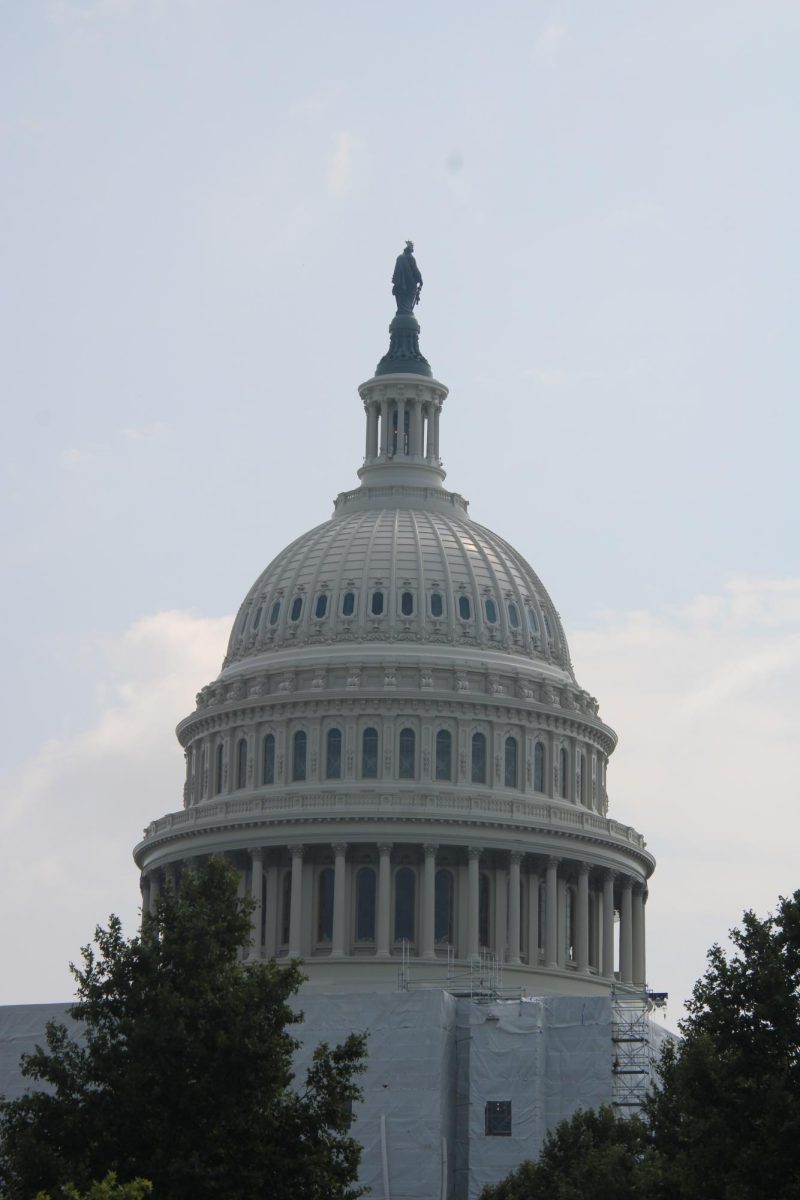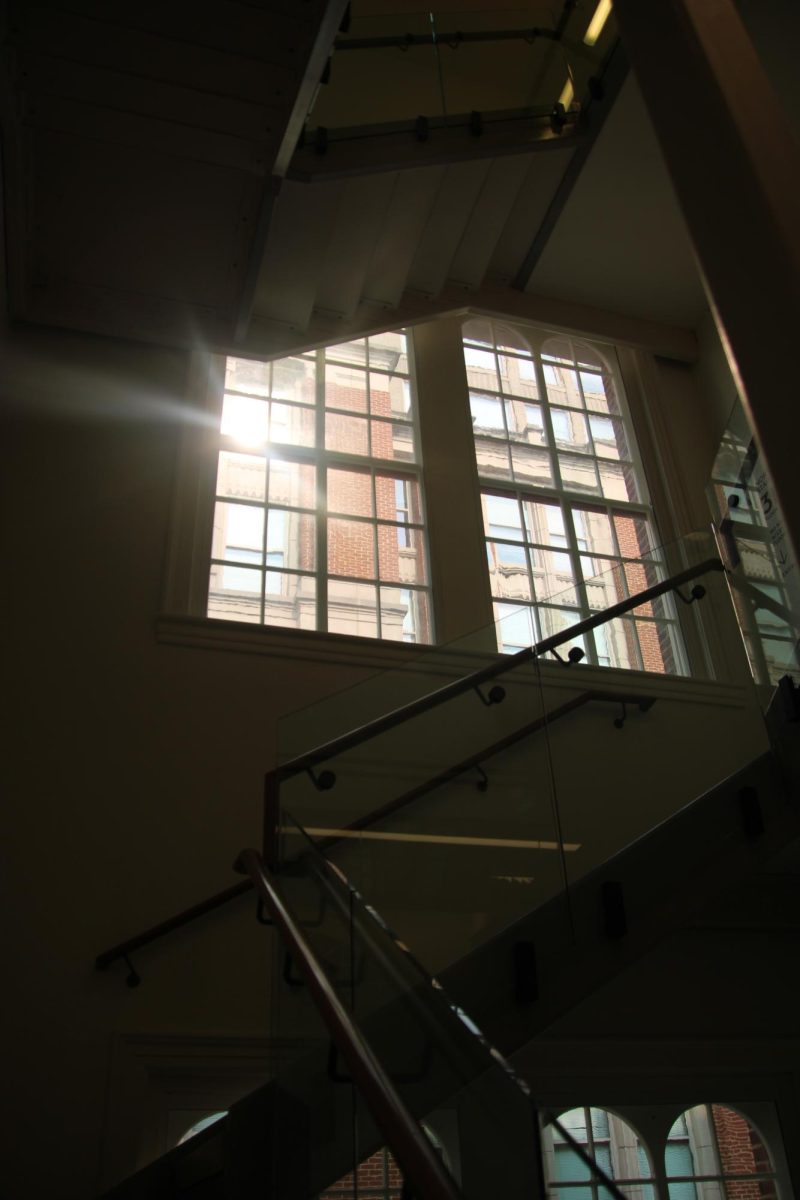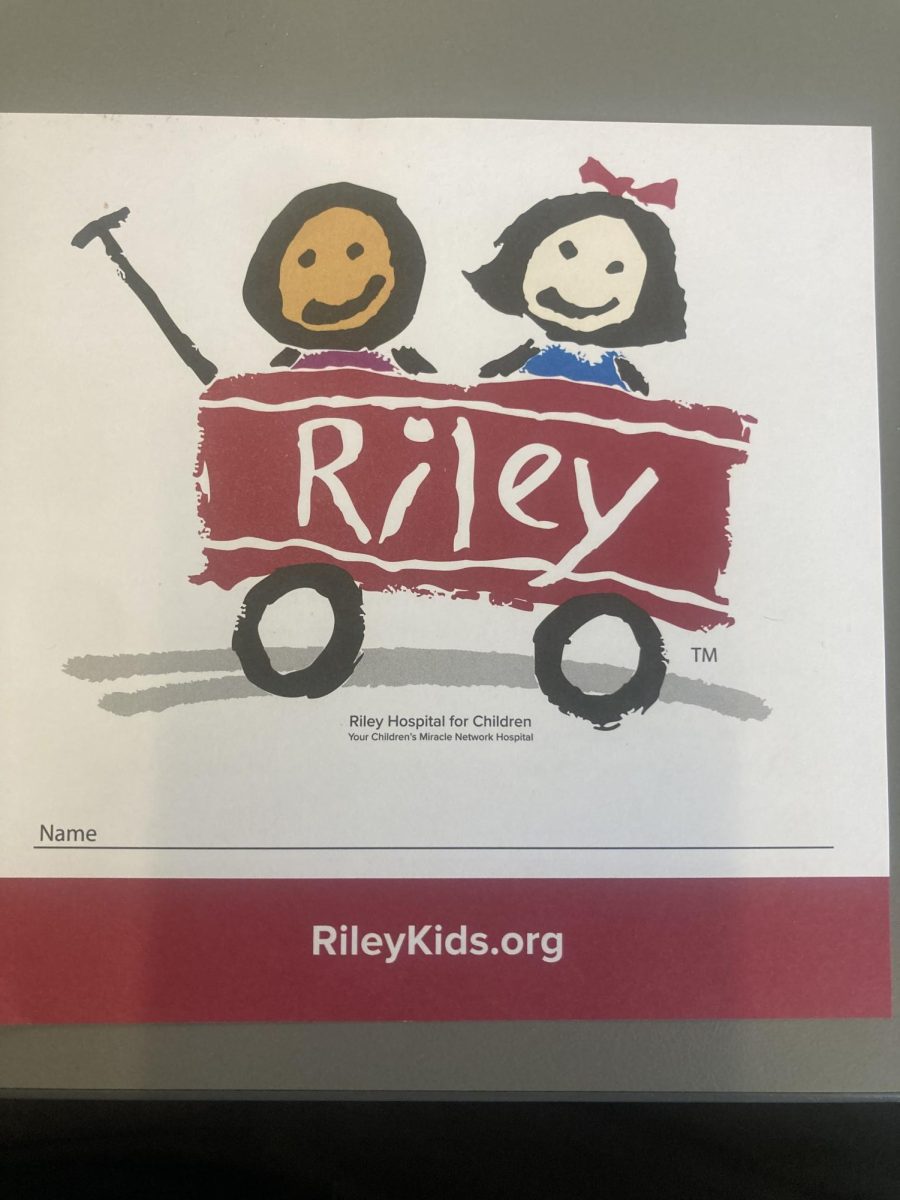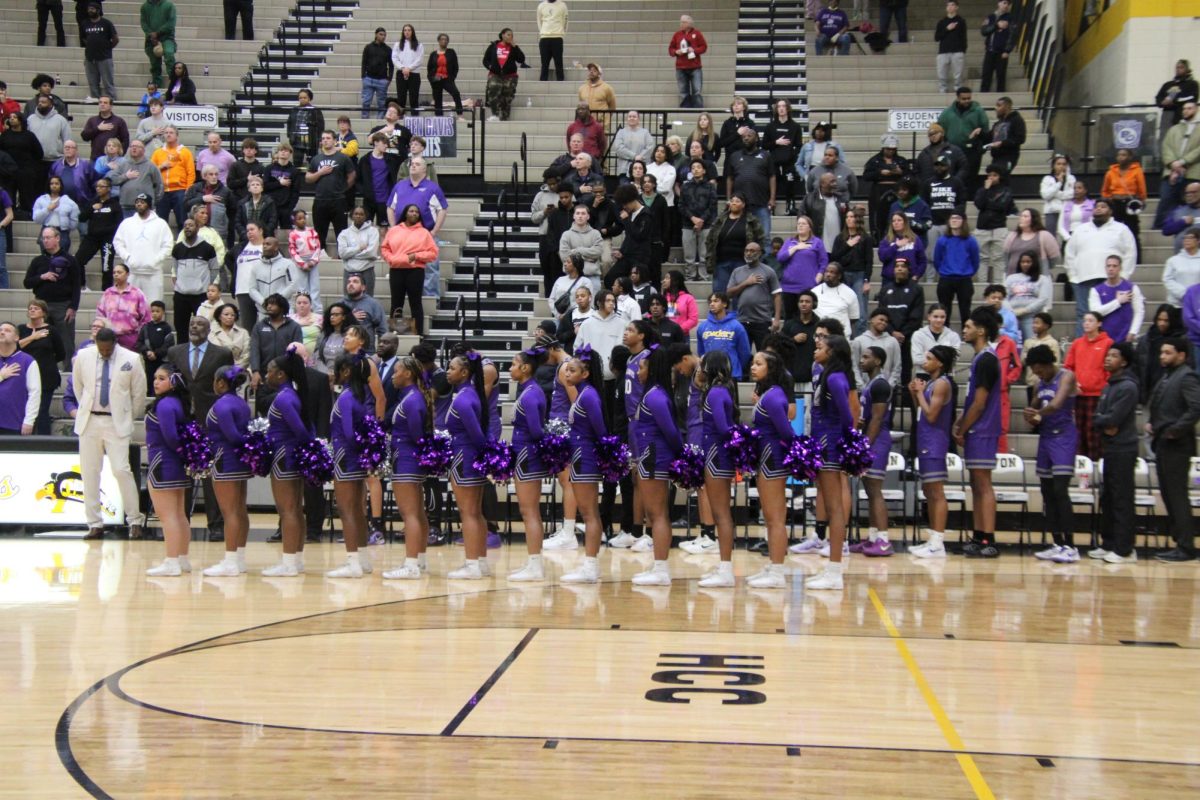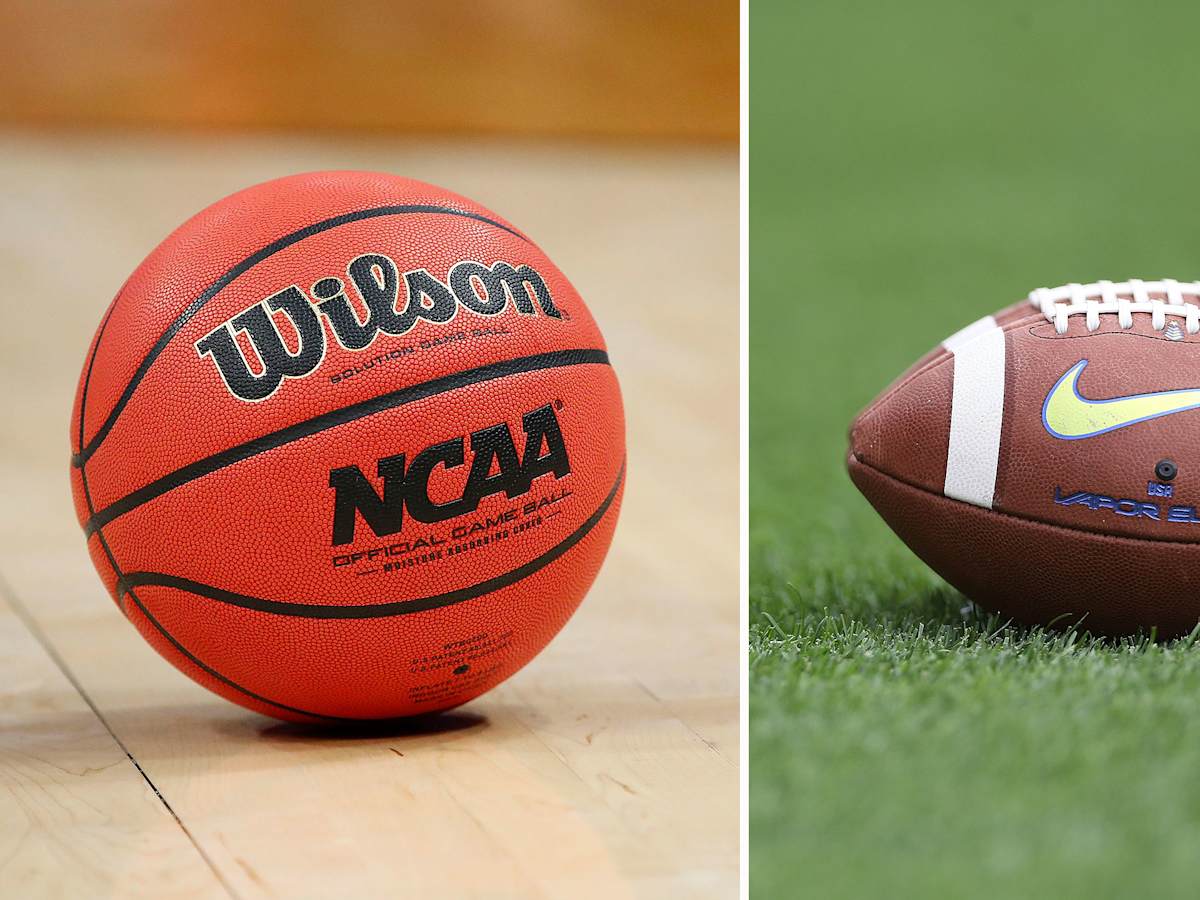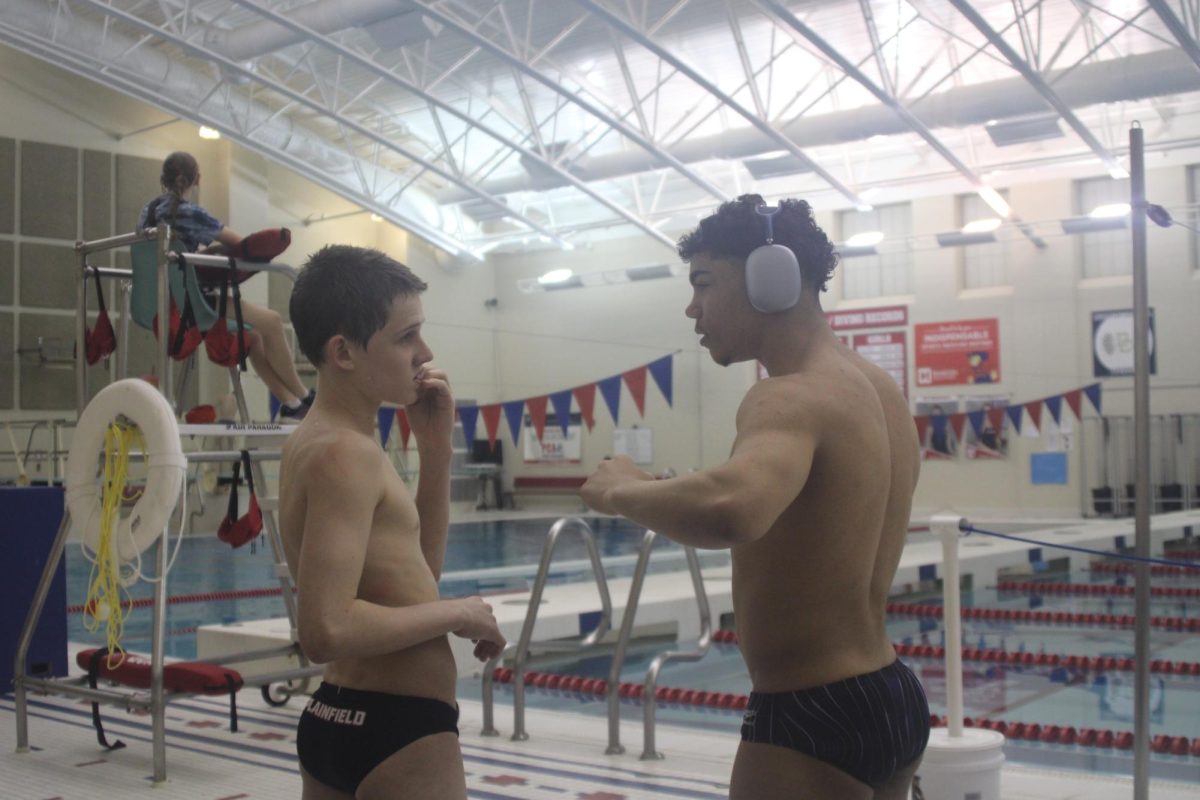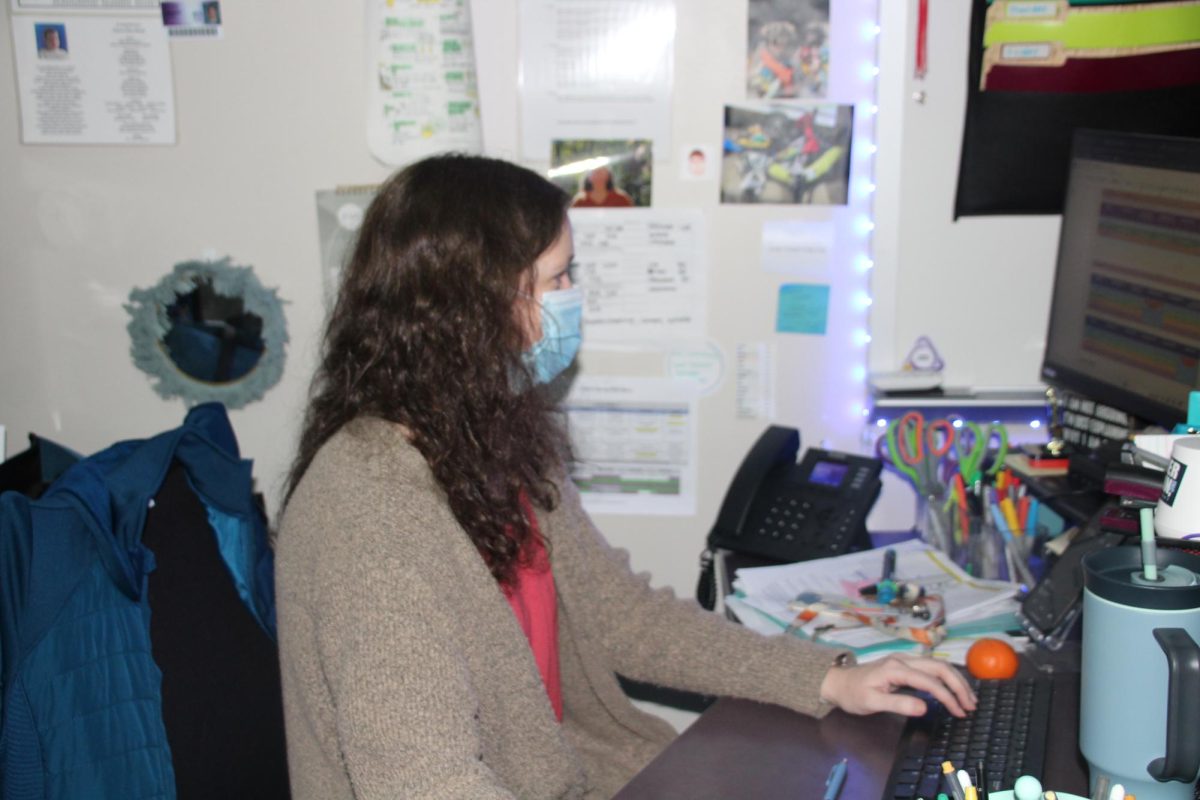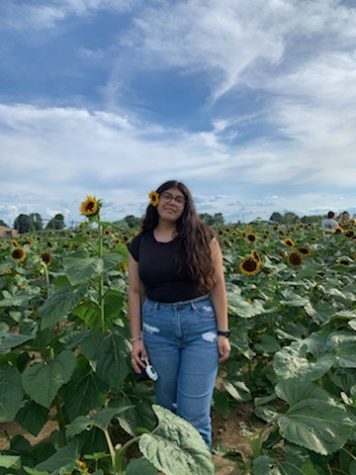This summer I had the amazing opportunity to spend a week at George Mason University as a National Youth Correspondent at the Washington Journalism & Media Conference.
Around November of my junior year I received an email from Elena Johnson, who is the Program Director of WJMC. I had been invited to the Conference and I was in genuine shock. I looked into the Conference and it looked promising. I registered and soon thereafter learned that I could apply for a scholarship to lower the tuition I´d have to pay to attend.
It was one of my happiest moments during December when I opened an email beginning with ¨Congratulations…..¨ I had received a $1,700 scholarship for the Washington Journalism and Media Conference.
At this point, I had registered and all I could do now was count down the days.
Throughout my scholarship acceptance up until the days before the Conference began, Program Director Elena Johnson sent out reminders, speaker announcements, instructions, etc. The timeliness of these emails was planned very well and the faculty were always extremely helpful.
As I counted down the days for WJMC I did a lot of shopping as well as a lot of mental preparation. I had never been away from my family for a long time, much less in a state nearly 10 hours away. Although I was excited for WJMC I was also very anxious because it was going to be a brand new experience.
Finally July 16 arrives and I head off to George Mason University. The departure from the airport as well as the arrival to GMU was hectic. I was feeling anxious, nervous, excited – truthfully a roller coaster of emotions.
Day one started off by going to The Hub where I would meet my Faculty Advisor as well as my Junior Faculty Advisor. Spoiler alert: my FA and JFA were some of the most amazing and kindest people I have ever met. Later in the evening we would have dinner along with our first speaker Savannah Behrman. I was familiarizing myself with my color group slowly but surely throughout the night.
Savannah Behrman is the Senate Correspondent for National Journal. Her accomplishments consist of being a WJMC 2014 Alumna, reporting for Politics NOW at USA TODAY, and lastly a News Associate at CNN. As you can see, Behrman went from being a WJMC Alumna to being a Senate Correspondent. First and foremost I would like to say how much of a down-to-earth and inspirational person that Behrman is.
There is extensive hate towards the journalism industry because it seems controversial, a waste of time, a waste of money, counterproductive, etc. As a fellow journalist I have heard and read all these arguments many times. But what can I do to combat this hate towards my passion, my life story, my career?
Well, I just stick with what Savannah Behrman said, ¨Be the change you want to be in the world¨.
The world is ever-changing, so is journalism in that case. The practice of journalism is what I would call inevitable. After all, like Philip L. Graham, former publisher of The Washington Post said, ¨Journalism is the first rough draft of history¨. So, if journalism is history and if history is rewriting itself then what do we have on our hands? Something inevitable.
My takeaways from Savannah Behrman:
-¨No¨ can be a motivator
-The stereotypical trajectory is changing
-Let criticism roll off of you
-Don´t take things personally
-Know when to say no
Day two was fantastic. We started the day off by doing a First Amendment simulation. In this exercise we were responsible for defending a story that was censored upon prior review. We all had different roles in which we asked questions, presented our case, and discussed among the group what was the correct thing to do. This simulation touched many of us closely as we have dealt with censorship personally at our school publications or have read other stories concerning the matter of censorship.
My teammates and I defended the story which covered a teacher with no integrity towards her students and our superiors defended the teachers reputation. Finally, we won the argument presented to the higher superiors. I learned many things from this simulation as it was our first big lesson as a team and it was barely day 2 of the conference.
We headed out of GMU to our second speaker Doni Holloway, producer of ¨Why Is This Happening?¨ Podcast, WJMC 2014 Alumna, and formerly worked at NBC/MSNBC.
Holloway taught me that it is important to keep trying in your passion. He told us many stories about rejection throughout his career but he made sure to align his failures with his successes. To get through the hardships of a journalism career I must network, seek mentors, ask questions, stay persistent, ignore nay-sayers.
Holloway was transparent about his full circle moment from being a National Youth Correspondent 10 years ago to standing in front of a crowd of National Youth Correspondents and motivating us. As Holloway said, ¨Maintain a sense of humility and humbleness.¨ This piece of advice holds a lot of power because it is heartfelt and applicable from a once-National Youth Correspondent to a current-National Youth Correspondent.
Next, we headed to Planet Word; ¨the museum where language comes to life¨.
On the first floor we saw phrases that had a comical or comforting meaning. On the second floor we saw a library that was color coded where there was an interactive reading section as well as a karaoke section where the patterns of words were displayed. Finally on the third floor there was a beautiful exhibit called ¨The Spoken World¨ where a giant ball showed different languages spoken by different people.
We ended the day with a Monument Tour which was very tiring but extremely worth it. First we got to see the World War II Memorial which was very serene. Next we got to see the Vietnam World Memorial followed by the Lincoln Memorial. We saw the Washington monument along with the Reflecting Pool. It felt surreal to walk through all these monuments, I truly could not believe I was really here enjoying life and learning so much.
Day three was incredible. First we stopped at George Mason Square for our first two speakers. First was Lauren Ober, Host and Producer of ¨Spectacular Failures¨ Podcast. Ober said, ¨ putting your work out there is extremely challenging but rewarding¨. I will remind myself of this whenever I am doubting my journalistic skills. Our second speaker was Laura Barron-Lopez, White House Correspondent, formerly working at PBS NewsHour, and WJMC 2009 Alumna. Barron-Lopez said, ¨Objectively tell the truth¨. This is extremely important to do when covering politics which is now one of my interests that sparked during the conference.
As a journalist it is important to put your work out there and really try new things because you never know what doors would open for you. Although, it is just as important to make sure the story you are telling is the truth without personal feelings or opinions. Combining what Ober and Barron-Lopez said I learned that I must be fearless in my writing.
We headed to the National Press Club for our second set of speakers. Nicholas Johnston, Publisher of Axios, former Bloomberg managing editor, and former junior reporter at The Washington Post. Johnston said, ¨Be accessible to who you are leading¨. I knew I could apply this to my position as editor-in-chief of my school’s newspaper. A newsroom can be an overwhelming environment however, having an accessible leader can always better the situation. Our fourth speaker was Alexis Johnson, correspondent of Vice News. Johnson was very friendly and kind towards the audience which made her speech much more interactive. Johnson said, ¨You are a person before you are a journalist¨. Many journalists tend to forget this once their career officially starts but Johnson was very set on reminding us of this.
We closed the day by playing color group feud. Spoiler alert: Lime won first place. Before we headed to the game area my FA, Sam Shaw warned us about the reputation that Lime held for first place. The pressure was on. We took first place by using teamwork, communication, and cheering each other on. ¨I don´t know about losing but I know about winning¨ – My amazing teammate Wandi Hadebe
Wow day four already? Time is moving way too fast. On Wednesday we stayed on campus all day which was very much needed after those first three days.
We kicked the day off with our first speaker Anna Rose Layden, freelance photojournalist, regular contributor to The New York Times, Reuters, Getty Images, and Bloomberg News. All the stories she shared with us are experiences we are just a few years away from. Layden works closely with the House, Senate, and White House. Her photography skills are out of this world. My favorite moment from her speech was when she showed her front cover picture in The New York Times. Seeing her happiness when showing this to a crowd was extremely heartwarming because it was like a full circle moment. In the future I hope I can showcase my work to a large audience just like Anna did.
Our second speaker was Patrick Money, director of freshman admissions at GMU. Money was also a very down to earth person because he was genuinely making an effort to help students as well as actively listening to all of our questions. Although his speech was more of a quick informative session and a longer Q&A he was very interactive with the audience. I think that college admissions officers and directors have to make a lot of tough decisions and his humor and sarcasm definitely reassured the audience. From this speaker I learned that a test score doesn’t define me. Although I had heard this many times before it felt better coming from an expert on the subject.
The next part of the day consisted of another simulation. In this scenario we had to write in Smart Brevity style as part of an editorial team at Axios. Smart Brevity is a writing style where you write precisely and concisely what your point is. As the book itself says, ¨The Power of Saying More with Less¨.
In this simulation my partner and I had to defend a hockey goalie retirement story through the use of Smart Brevity. We needed the four main parts, a tease, lede, ¨Why It Matters¨ section, and ¨Go Deeper¨ section. A tease is essentially an attention grabber, kept to a maximum of six words. A lede is telling you directly what you will read about. To me a lede is what a normal headline would be to a story in any other news publication that isn’t Axios. Next is the why it matters section. Here you state who it affects, how it can be fixed, or how long it has been going on. This is the largest section of a Smart Brevity style article. Lastly you finish off with the go deeper section where you give a link to more information and if you really feel like it three more informational bullet points.
Our Smart Brevity simulation lasted three hours, here’s what I learned:
-Start by stopping
-Write in the most provocative yet accurate way possible
-Boil down your most important point
-No anecdotes or jokes
-Use Axioms, because they rock
-Bold your writing
-Use bullets
-Just stop
Will I apply Smart Brevity to my writing? Yes. Is it my style? No. Do I find it useful? Yes.
Smart Brevity can take you down the right journalism path if done correctly. My color group and I had a long discussion about the use of Smart Brevity, pros/cons, similarities, etc. This activity was very engaging because we all had different stories to cover and defend which meant that Smart Brevity wasn’t going to work in every scenario. That is perfectly fine because it allowed us to share our opinions as well as learn from each other. In every lesson and color group meeting I opened my mind up more and more to different viewpoints.
We ended the night with a breakout room speaker and a networking mixer. My speaker was Kayla Sharpe, associate editor at Bloomberg. Since the audience with this speaker was much smaller I felt as if her speech was much more conversational than any other. Sharpe shared her experience working as an editor at many different places such as POLITICO, Axios, and Subscriber Strategy. Many of the previous speakers had been transparent with their different jobs and how they improved their skills but seeing a person like Sharpe who was constantly trying new things motivated me to put myself out there. Even as a high schooler I can try new things and set myself up for these jobs in the future.
Day five, wasn’t it just day one? Last full day at WJMC had arrived and everything felt bittersweet. Our day started with a picture in front of Capitol Hill followed by some time around the National Mall. After all the correspondents lined up for a picture, we each went our own way.
First my friends and I went to the United States Botanical Garden. The garden was mesmerizing and I was astonished at the beauty I got to see. My friends and I strolled through the garden slowly to take in all the beauty, the smell, and the comforting feeling of the atmosphere.
Then we visited the National Gallery where we saw many renaissance paintings. It was so calming to walk from room to room. Seeing how the bare form of art was done through a painting hundreds of years ago is an experience like no other.
We finished off the National Mall by visiting the National Air and Space Museum. Wow, just wow. There were so many cool things to see like all the planes, space suits, and rockets. Next year I will definitely go through the planetarium.
On the way back to GMU I checked my watch to see 27,000 steps before 3pm. At this point I was extremely tired and everything hurt. The day didn’t end there though. Now we had prep time for the Gala. The Gala was the best way to end WJMC. I talked with my friends, laughed, and danced my heart out. Even though I was having fun, the bittersweet feeling got bigger and bigger. I couldn’t think of anything besides this all being over in 12 hours.
We wrapped up the Gala and took the last bus ride to GMU. As we all laughed and went up to our rooms for bed check it was closing in on us that it was ending.
Day six, final day. We had our last color group meeting where we shared our favorite memories with each other and received our certificates. I loved seeing the smiles on everyone’s faces as we heard our best moments of the week. Finally we headed to our closing speaker.
Sam Wolfe, WJMC 2014 Alumna, account Strategist at Google brought tears to our eyes as he closed WJMC. Once again I was reminded to be fearless, to cherish every moment, to go after what I wanted, and to not stop believing.
My faculty advisor, Sam Shaw, was one of the best people I met at WJMC. The first thing Sam taught me was to take a safe risk. Hearing this on arrival day prepared me for what the next week would look like. Throughout the week in all our color group meetings we debriefed, shared opinions, had discussions, joked around, and learned so much. When Sam was in front of us teaching us about a simulation or talking to us about a speaker I never felt like I was being lectured. I was taking the information in at a good pace and everything made sense. By the way, Sam is a teacher so this is kind of her thing. Towards the end of WJMC I realized that Sam was born to be an educator and a mentor. She changed my life and I know back home she is changing lives and teaching kids in the best way possible. Thank you for being my leader Sam Shaw, you were amazing and I couldn’t have asked for a better faculty advisor.
Olivia Hagele was my junior faculty advisor. She was one of the nicest people I met the first day. During the week if I was standing alone or walking alone, Olivia would initiate a conversation with me about any topic. I could always look to her for a smile or a fun conversation about anything that was going on around us. Being around Olivia did not feel awkward because she was just so friendly and welcoming to everyone. The lime group agreed that she didn’t make it seem like she was just doing a job. She was there with us and she was going through everything with us. Thank you for being my secondary leader, Olivia Hagele, you were so kind to all of us.
Thank you, Elena Johnson, for allowing me to experience WJMC, thank you to every speaker that taught me something different, thank you Sam Shaw and Olivia Hagele for being the best FA and JF. Thank you to all the staff for making this happen. Thank you lucky limes for an amazing week.
This experience was like no other. I quite literally felt a roller coaster of emotions throughout the week because of all the friends I was making, everything I was learning, the pretty sights I got to see. A lot was going on around me but I really did enjoy every moment of it. I would do it over 100 times if I could. That random email I received months ago turned into one of the best experiences of my life. I can’t wait to return to WJMC for another amazing summer.


